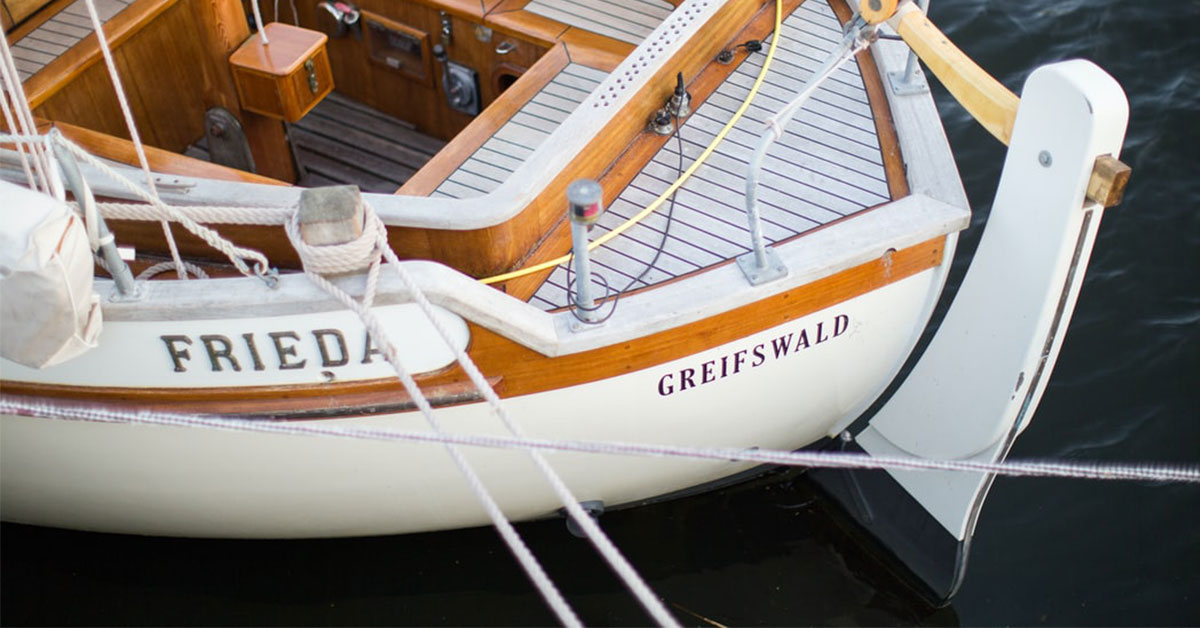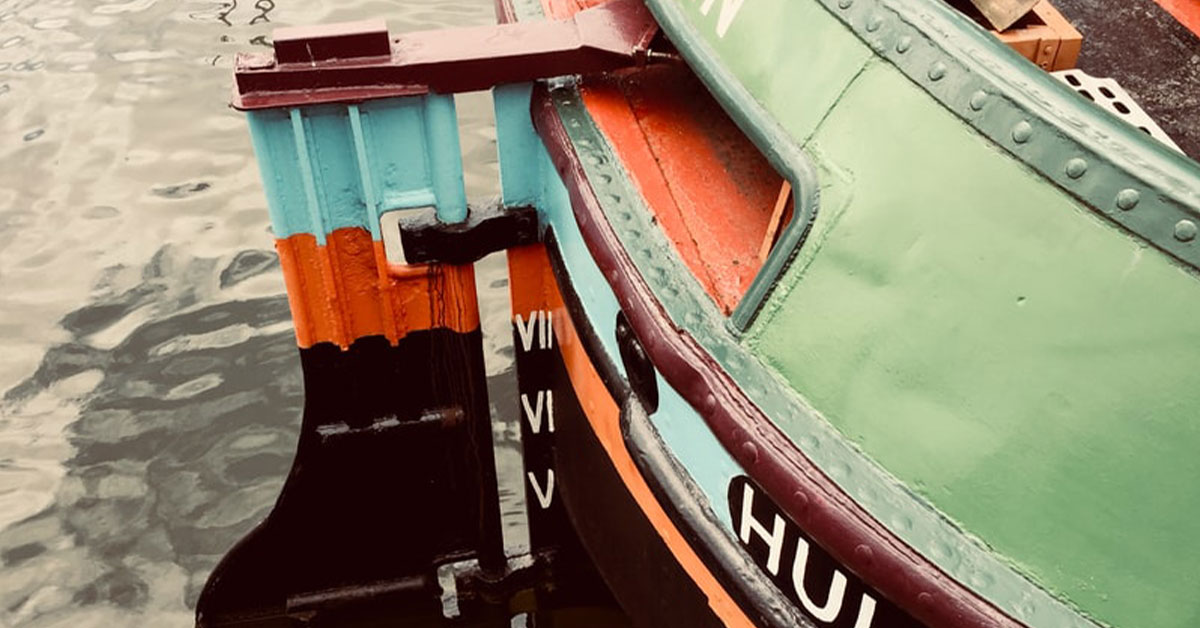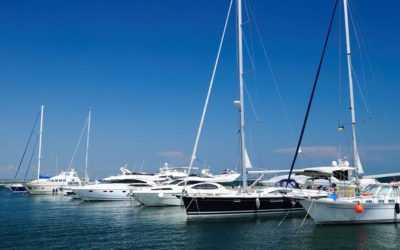Inspecting the tiller and rudder assembly is undoubtedly the number one safety check, even before you get to the rigging or mechanics! Band of boats tells you how to inspect your rudder !
Damage to the helm is undoubtedly the surest way of heading back to land, but not necessarily the way you would choose! Any kind of breakdown like this would make the sailor powerless to do anything. All the more reason to watch for wear and the slightest signs of rudder failure before it’s too late.
1. Inspect your rudder system starting with the rudders
The outer rudder is more accessible than any other, but is just as fragile, and you should always check that its pintles and gudgeons (and especially their retaining screws) have no wear or give. A spade rudder is more difficult to access, so you should make the most of any opportunity you get to make sure there’s nothing wrong with it.
When grounding or getting the boat out of the water, check that there is no give between the tiller and the rudder blade. The slightest give would have serious consequences in terms of the boat’s feel and responsiveness and therefore your enjoyment, as well as potentially being a harbinger of more serious damage. By moving the blade to either side, you can check that there aren’t any stiff points either, which is probably a sign of a faulty stock. You can check that the rudder is in line with the rest of the boat by taking a step back and aiming with the keel. Take this opportunity to check that there are no cracks, especially in the area where the rudder connects to the stock. If there are any, it means water may be able to get in and fill the rudder and rot it from the inside.

2. Maintaining the rudder when the boat is dry
Take advantage of the fact that the boat is dry to repair even the smallest dents with a quality epoxy putty. Of course, you must be careful with the surface finish, the profile, and above all the trailing edge, which must be sharp and flat (not rounded) to avoid creating drag that is detrimental to performance. You must be generous when applying waterproof paint to the appendages and therefore the rudder. And don’t forget the top of the spade… that narrow, inaccessible space between hull and rudder, which no one sees, and which so many of us neglect…
If you’ve spotted a leak in the rudder stock tube or rudder gland, now’s the time to rectify this, just like you can check the gaskets for wear by wiggling the rudder blade from left to right and from bow to stern. If you have any doubts, you shouldn’t hesitate to call in a professional.

3. Inspect your rudder by checking the tiller!
The tiller has to hold up to a lot of exertion, and in a luff start, it’s too late for you to start worrying about neglecting split wood or the screw not being tightened properly… The tiller controls must also be checked, especially as they’re hidden and therefore more likely to be overlooked. Motorboats are equipped with cable steering (which should checked and lubricated) or hydraulic steering (which requires little maintenance other than tightening the fittings and checking the oil level).
On most sailboats, the helm is operated by lines passing through pulleys. You mustn’t neglect to check these cables, and their terminals, as well as checking that axles and pulleys are lubricated, as well as looking for possible traces of electrolysis between the quadrant and the stock (one is generally made of aluminium and the other of stainless steel, so corrosion here can have devastating effects). All these precautions will make the helm softer to hand and more enjoyable and reduce any risks of sudden breakage.
Nevertheless, helm damage can never be totally ruled out and the better prepared you are, the better you are equipped to deal with it. Boats fitted with a wheel steering system must be fitted with a spare tiller; but this shouldn’t be hidden away in the depths of the boat and must be genuinely useable. The safest thing is to try it before you have to use it! I always do my utmost to encourage owners of tiller boats to keep an oar of the right size and an oarlock on board, a set of equipment that can mitigate a number of critical situations. This includes rudder problems of course, but also engine damage, provided that you’ve learnt the noble and indispensable art of sculling.
Find the boat of your dreams among our thousands of used boats for sale on Band of Boats!
The article is written by Olivier Chauvin.

